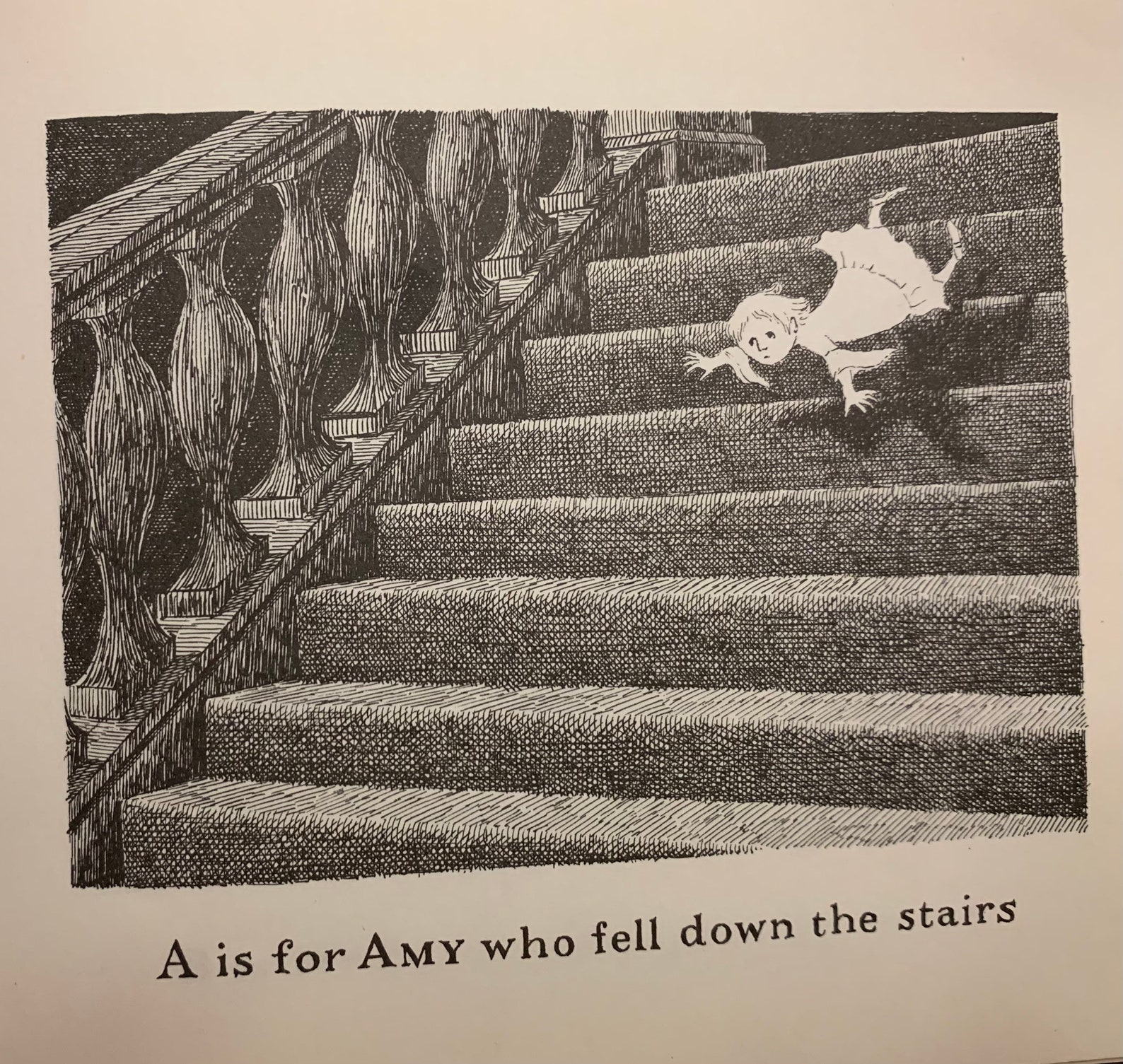

“When you were a child, would you have relished The Gashlycrumb Tinies?” an interviewer asked. Gorey’s gift to his youngest readers is a book of ABCs that uses a variation on that schoolyard staple, the dead-baby joke, to teach them that death is part of life. Seen in that light, it really does offer moral instruction, after all. And it did so at a time when the Little Golden Books that dominated kinderculture were serving up a steady diet of treacle and mush. The Gashlycrumb Tinies broaches the subject of death in a children’s book, or at least in what looks like a children’s book. And it doesn’t make exceptions for youth or cuteness. This, presumably, is what happened “after the outing.” Death is ever-present, even in the coziest domestic settings, just waiting for one dumb move (say, swallowing tacks), a freak accident (suffocating under a rug), an act of God (managing, somehow, to be devoured by mice). The book’s back cover reveals their fate: a cluster of headstones huddles where the children stood. Like the child-snatching bogeyman of every parent’s worst nightmares, Death is only posing as the Tinies’ guardian. The cover illustration depicts Death as a skeletal nanny, surrounded by his charges. “They’re the easiest targets.”Īctually, there is one parental figure in the book. Emblems of innocence and naïveté, children make perfect victims, as Gorey told the New Yorker. But as with Beckett’s absurdist tragicomedies, Gorey’s darkly droll tales touch-lightly-on weighty matters: the death of God, the meaning of life, and, always and everywhere, our impending mortality.

Gorey’s books look at first glance like children’s books, or at least children’s books from the Victorian or Edwardian ages in which they’re often set, and his tongue-in-cheek takeoffs on children’s genres like the Puritan primer or the 19 th-century morality tale make them sound like them, too. Gorey, who died in 2000 at 75, was the author and illustrator of a hundred or so little picture books whose pen-and-ink illustrations flawlessly counterfeit Victorian engravings and whose lugubriously amusing nonsense verse, equal parts Edward Lear and Samuel Beckett, spins black comedy from murder, mayhem, and existential malaise. This essay is adapted from Born to Be Posthumous: The Eccentric Life and Mysterious Genius of Edward Gorey, out now from Little, Brown.Ĭhild abuse was Edward Gorey’s métier, in a manner of speaking. These Classic Mysteries Offer a Very Modern Gender TwistĪfter My Friend Died, It Was My Job to Go Through His Unpublished Writing. Roman Polanski, David Bowie, and a New Solution to the Problem of Art Made by Monstrous Men Guess What? This Mystery Story Written by Robots Is Kind of Good!


 0 kommentar(er)
0 kommentar(er)
